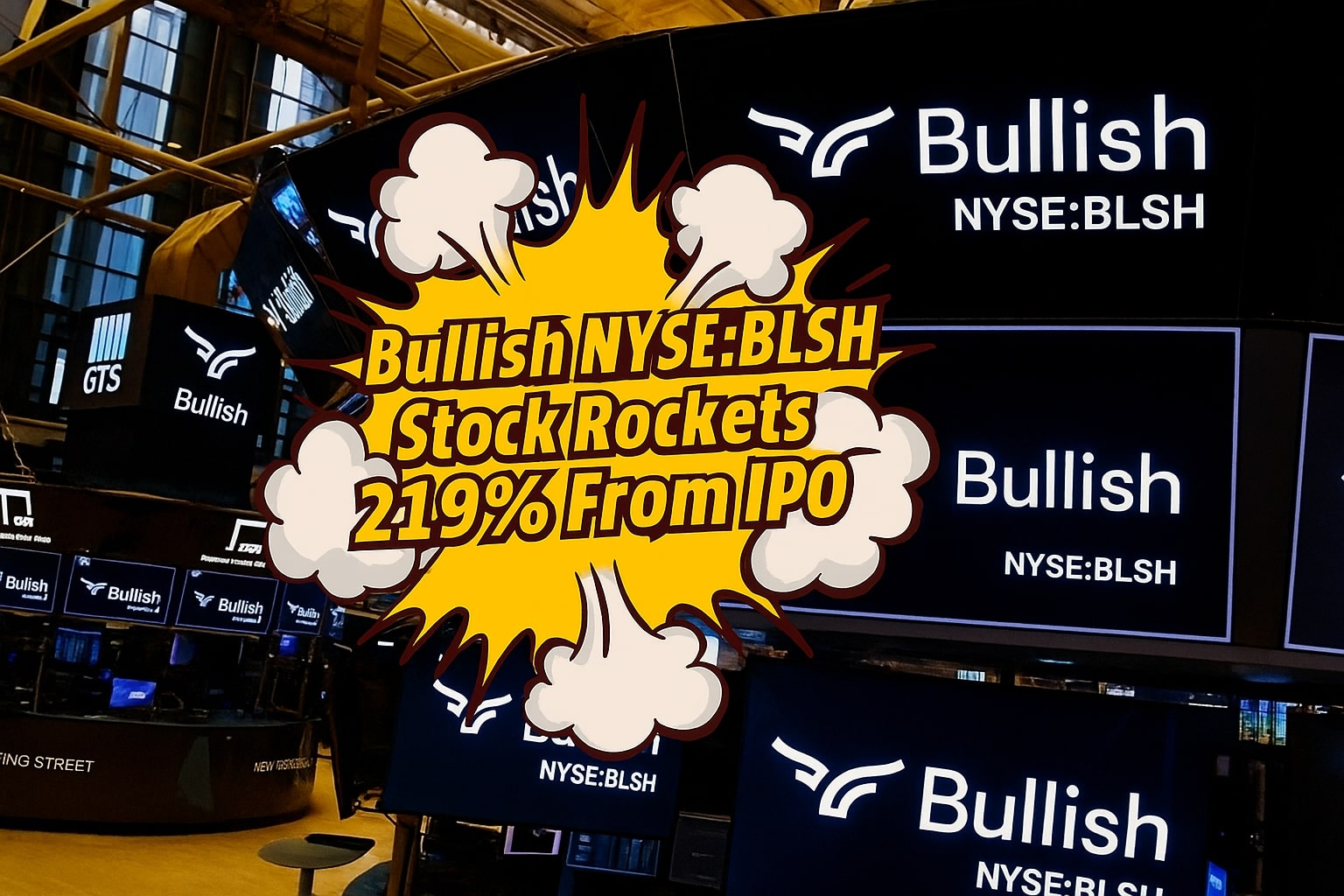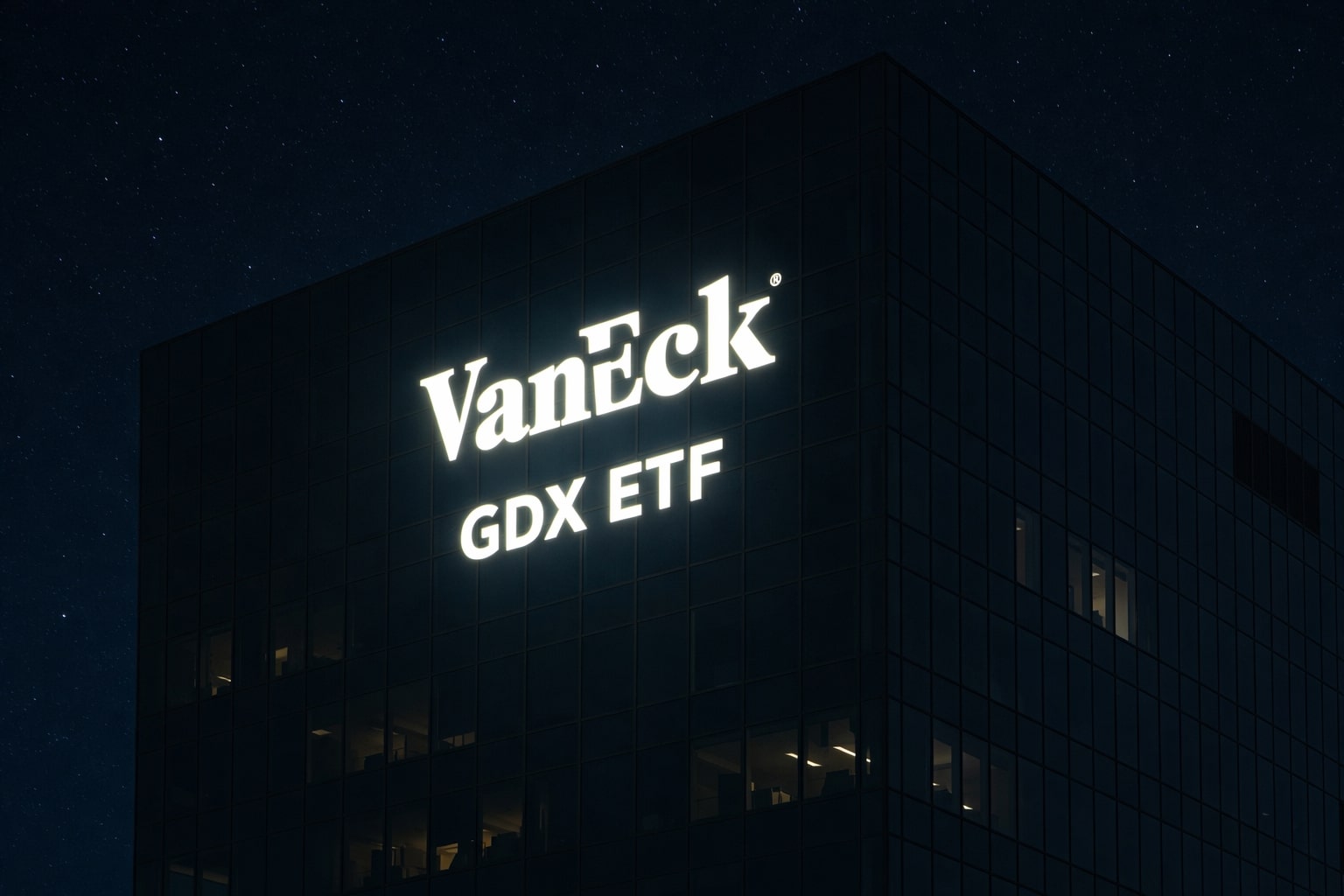
Bullish NYSE:BLSH Stock Rockets 219% From IPO to $118 High Backed by Bitcoin Holdings
From a $37 debut to triple-digit gains, NYSE:BLSH leverages its $2.9B BTC war chest, rising fee income, and institutional market entry to sustain momentum | That's TradingNEWS
NYSE:BLSH — Post‑IPO Price Discovery, Balance‑Sheet Firepower, And The Road From $37 To $118 To $68 To $73
NYSE:BLSH Price Action And Liquidity: From $37 Pricing To $118 Intraday, Closing $68, Then Hovering $73–$78
The first 24 hours of trade in NYSE:BLSH were a stress test of demand, float dynamics, and valuation anchoring. Shares priced at $37 raised roughly $1.1 billion, opened at $90, ripped to $118, were halted for volatility, and settled the debut at $68, a market capitalization near $10 billion on about 150 million post‑IPO shares if the over‑allotment is fully exercised. Pre‑market follow‑through printed $78, while regular hours stabilized around $73.21 as shown on the live tape; the real‑time chart is here for continuous reference: NYSE:BLSH live chart. That path — $37 to $118 to $68 to $73 — is exactly what price discovery looks like when a crypto exchange operator lists into a risk‑on tape with a retail allocation higher than a conventional IPO and an institutional buyer list willing to pay up for growth optionality. The spread between the $68 day‑one close and the $73–$78 follow‑through indicates a two‑way market has formed with tighter bids building above $70 and momentum sellers using $78–$80 as the first test of overhead supply
What The Business Mix Means For Revenues At NYSE:BLSH: Exchange Fees, Data, And A Crypto Treasury That Moves With BTC
BLSH’s engine is an institutional exchange plus information services, a barbell that pairs deep liquidity with monetizable data and events. On the flow side, management pointed to average daily volume around $2.6 billion through Q1 and cumulative throughput above $1.25 trillion, with a BTC/ETH spot share in the mid‑30s to low‑40s versus a defined peer set. That activity level drives fee revenues that expand with both volatility and market share. On the information side, CoinDesk has transformed from a single‑digit‑million revenue line in 2022 to a reported $62 million in 2024 as conferences, index products, and data subscriptions compound. Layered on top is the crypto balance sheet: about 24,000 bitcoin were held as of the first‑quarter checkpoint. Mark those coins at roughly $118,000 per BTC and the treasury clocks in near $2.8–$2.9 billion; that figure has torque, and the P&L will swing with it. When BTC rallied in 2024, revaluation gains topped the billion‑dollar mark; when markets chop, that tailwind can fade or turn into headline noise. The mix matters for investors tracking run‑rate revenue against mark‑to‑market effects because fee income, data/event income, and treasury marks pull the financials in different directions across a quarter
Regulatory Footprint And The “Institutional First” Pitch At NYSE:BLSH: Why Licenses, Rulebooks, And Product Scope Support A Premium
BLSH is building in jurisdictions that write the rulebooks: filings indicate approvals or operations across the U.S., Germany, Hong Kong, and Gibraltar, with additional licenses in flight. The policy backdrop has brightened with the new stablecoin framework under the GENIUS Act, which is catalyzing bank‑grade on‑ramps and ETF inflows across the asset class. An institutional client set will not move size without regulatory clarity, segregated custody, and reporting standards that look like traditional capital markets. That is the wedge BLSH is using: sell market infrastructure, add derivatives and margin products as permissions expand, distribute data and indices for the CFO suite, and keep the crypto treasury transparent enough that owners can price the risk
Balance Sheet, Book Value, And Why Price‑To‑Book Is The Oddly Useful Multiple For NYSE:BLSH Right Now
At a first‑day close of $68 and a share count near 150 million, equity value lands at about $10.2 billion. Against reported net assets around $2.0–$2.5 billion mid‑2025, price‑to‑book spans roughly 4.1x to 5.1x. Book is not a perfect compass for an exchange and media hybrid, but here it is informative because book includes the crypto treasury that can be independently marked and because fee businesses scale off capital‑light infrastructure. By contrast, a revenue multiple looks stretched if you anchor on roughly $214 million of adjusted revenue in 2024; that would imply a headline P/S north of 40x, moderating into the high‑30s if you pencil 20% growth. The reconciliation is simple: the market is valuing balance‑sheet option value plus operating leverage rather than last year’s top line. That is also why the $37 IPO price — set when bitcoin traded lower — is less relevant than the live mark of BTC and the realized trajectory of fee take and market share across the next two quarters
Profitability Cadence And Volatility Sensitivity At NYSE:BLSH: Two Profitable Years, A Q1’25 Loss, And How To Read The Tape
The platform put up net income in fiscal 2023 and 2024, then printed a Q1 2025 net loss of roughly $348.6 million as crypto markets cooled intra‑quarter and as investment in product, licensing, and distribution stayed elevated. The lesson is not exotic: a trading venue’s income statement is pro‑cyclical to realized volatility and depth of book. When BTC/ETH ranges expand and institutions re‑risk, fee capture and spreads fatten; when ranges compress, fee capture normalizes. Add a data/events line that is seasonal, plus a large BTC treasury that moves tick‑for‑tick with coin price, and quarter‑to‑quarter prints can look lumpy even when the structural trend is up and to the right. For positioning, that argues for using price dislocations — not headlines — to scale exposure
Competitive Context For NYSE:BLSH: Share, Spread, And Where The Edge Sits Versus COIN, HOOD, And The CeFi Pack
BLSH is fighting for share against incumbents that already monetize retail and institutional wallets. The differentiation is a “compliance‑first, institutions‑first” stance, the addition of derivatives and margin to increase venue stickiness, and a distribution flywheel via CoinDesk indices, events, and content. Management has also chosen to compress spreads to win share in core pairs; that choice defers some near‑term margin but installs BLSH deeper in routing logic for bigger tickets. The upside case rests on the idea that institutional crypto volumes are still early, ETF rails are pulling in capital, and a high‑frequency, low‑latency venue with regulatory clarity can compound daily volumes above the $2.6 billion average quoted for Q1. The downside case is obvious too: if volatility dries up, retail disengages, or pricing competition intensifies, revenue beta goes the wrong way faster than costs can flex
NYSE:BLSH Technical Map: Levels That Matter After The Post‑IPO Spike
With a $90 open and $118 high now etched, the first resistance band sits in the $78–$80 zone where intraday supply capped the pre‑market pop; above that, a clean break invites a run toward $90 and then a sentiment retest of $100. On the downside, the debut close at $68 is the obvious first line; lose $68 on volume and price often searches for the IPO price memory at $61–$63. Given the size of the $37–$118 span on day one, volatility compression is the base case as market‑makers tighten spreads and the borrow market normalizes
Insiders, Float Math, And Where To Track NYSE:BLSH Filings
The float will be managed tightly through the 180‑day lock‑up, which points to an early‑February 2026 unlock. That is the date window that can add mechanical supply. Until then, price will be most sensitive to earnings cadence, BTC’s path, and any secondary prints. Monitor insider movement and new Form 4 activity as the windows open here: NYSE:BLSH insider transactions. The broader corporate profile, including governance and share‑count detail, is here: NYSE:BLSH stock profile. A lack of insider selling into strength before the unlock would be a constructive tell; the opposite would argue for respecting the $68 line more conservatively
Macro Tailwinds For NYSE:BLSH: ETF Inflows, Institutional Rails, And A Stablecoin Rulebook
Spot ETFs have normalized crypto exposure for pensions, RIAs, and balance sheets; that mechanical bid is showing up in on‑venue depth as well as in treasury demand for ETH and BTC. Stablecoin legislation has cut operational friction for on‑ and off‑ramps, improving settlement predictability and broadening corporate usage. If bitcoin holds six digits and ether keeps leadership in tokenization and stablecoin activity, the fee environment for an institutional exchange remains favorable. BLSH’s information unit also benefits when funding flows rise; conferences, sponsorships, and index licensing all correlate positively with AUM growth in digital assets
Risk Ledger At NYSE:BLSH: What Can Go Wrong At $73–$78
Three risks dominate the near term. First, valuation translation: on backward revenue numbers, the P/S screens rich; if BTC stalls and volumes fade, growth investors can step back and let price drift toward book‑value anchors. Second, regulatory drift: multi‑jurisdiction licensing is an asset until a rule changes mid‑cycle; BLSH’s focus on regulated markets helps, but it does not inoculate the model from headline shocks. Third, supply: unlocks, follow‑ons, or vendor‑related stock sales into strength can cap rallies. Treat the $68–$80 range as a discovery zone until the first quarterly print as a public company resets the narrative with hard numbers
Valuation Bridge And Positioning Call On NYSE:BLSH At Today’s Price
At $73.21, NYSE:BLSH trades at roughly 4–5x book and a headline revenue multiple that looks demanding if you anchor to 2024’s $214 million adjusted line, but more balanced if you consider the coin treasury near $2.8–$2.9 billion, fee scalability off $2.6 billion of average daily volume, and the structurally higher institutional participation supported by ETF rails and a friendlier rulebook. In plain terms, you are paying for operating leverage plus balance‑sheet torque. The right way to underwrite that is not to chase breakouts above $80 before the first earnings call, but to lean into weakness near $68 with a staged plan that accepts crypto beta and focuses on fee growth, share gains in BTC/ETH, and evidence that the data/events flywheel is compounding. My call at $73–$78 with the chart still digesting the debut is a Hold with a positive bias, upgrading to Buy on decisive dips into $62–$68 or on a print that shows fee run‑rate acceleration, sustained daily volumes above $3.0 billion, and clean operating expense discipline. Keep the live chart in view for timing and liquidity cues: NYSE:BLSH real‑time
That's TradingNEWS
Read More
-
GDX ETF at $88 While Gold Tests $4,400: Are Gold Miners Poised for $100?
19.12.2025 · TradingNEWS ArchiveStocks
-
XRP ETF Boom: XRPI at $10.94 and XRPR at $15.49 as XRP-USD Clings to the $1.80–$1.90 Zone
19.12.2025 · TradingNEWS ArchiveCrypto
-
Natural Gas Price Forecast: NG=F Hovering Near $3.92 As Weather, LNG And Storage Collide
19.12.2025 · TradingNEWS ArchiveCommodities
-
USD/JPY Price Forecast - Dollar to Yen Near 157 as BoJ’s 0.75% Rate Hike Backfires on the Yen
19.12.2025 · TradingNEWS ArchiveForex


















